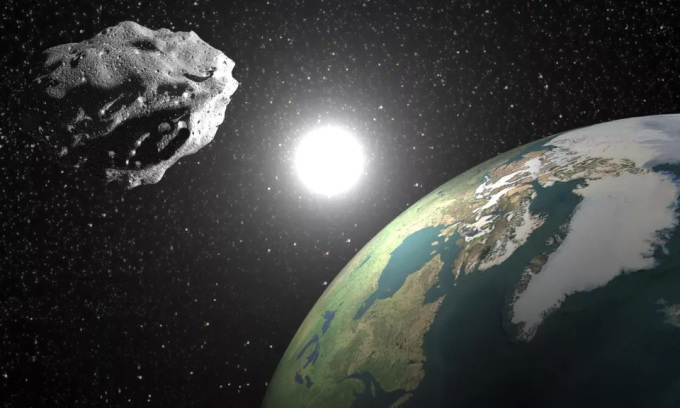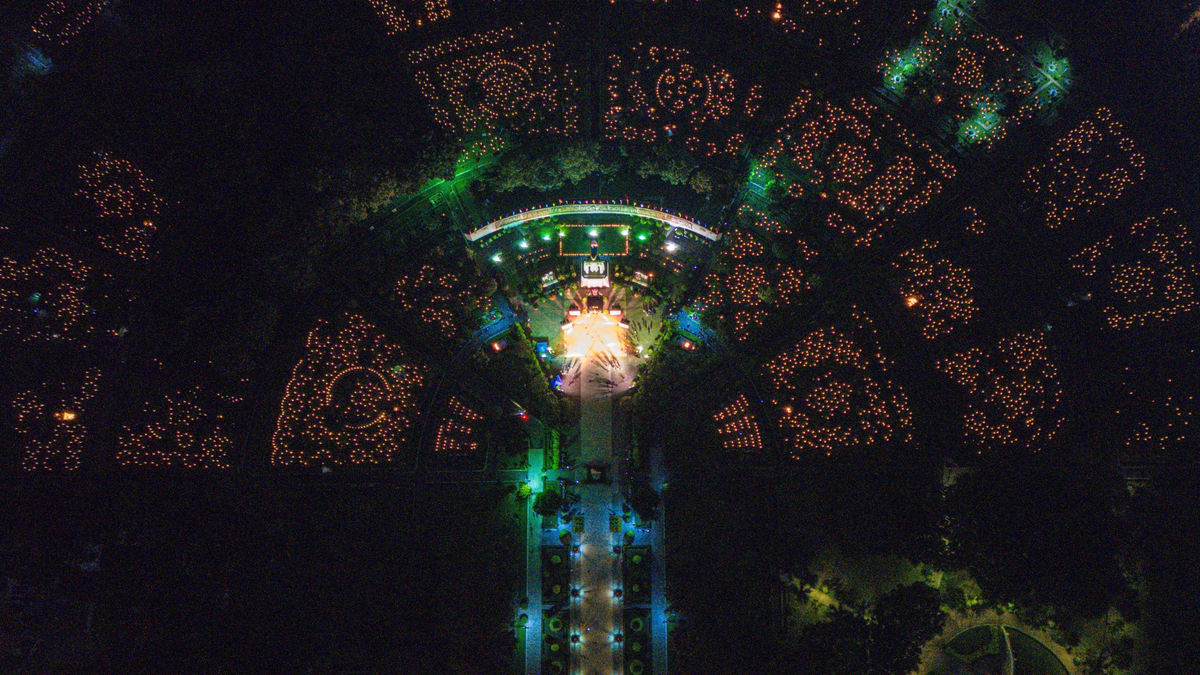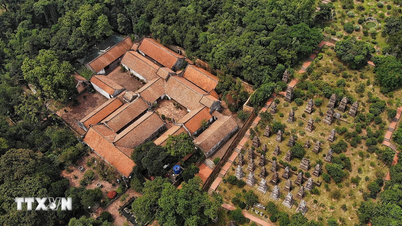Scientists discovered that asteroid 2023 FW13, about 15 meters in diameter, has been a "neighbor" of Earth for thousands of years.

Illustration of an asteroid flying close to Earth on its journey around the Sun. Photo: Zoonar GmbH/Alamy Stock
Named 2023 FW13, this asteroid is a "quasi-moon" or "quasi-satellite" type, meaning it orbits the Sun on a similar time frame to Earth, but is only slightly affected by Earth's gravity, Live Science reported on May 31.
2023 FW13's estimated diameter is 15 meters. In orbit around the Sun, 2023 FW13 also orbits Earth, coming within about 14 million kilometers of the planet. Meanwhile, the Moon has a diameter of 3,474 kilometers and is closest to Earth at 364,000 kilometers, according to NASA.
The Pan-STARRS observatory atop Haleakalā volcano in Hawaii first discovered 2023 FW13 in March. Its existence was later confirmed by the Canada-France-Hawaii Telescope and two observatories in Arizona. On April 1, the Minor Planet Center of the International Astronomical Union (IAU) officially added the asteroid to the list.
Some estimates suggest that 2023 FW13 has been Earth's neighbor since at least 100 BC. It will continue to orbit the planet until around 3700 AD, according to astronomer Adrien Coffinet, who first classified 2023 FW13 as a quasi-moon after modeling its orbit. "It appears to be the oldest quasi-moon of the Earth known to date," Coffinet said.
Despite its relatively close proximity to Earth, the quasi-satellite is unlikely to collide with the planet. “The good news is that such an orbit does not lead to an unexpected collision,” said Alan Harris, an astronomer at the Space Science Institute.
2023 FW13 isn't Earth's only quasi-satellite. Another quasi-satellite, Kamo'oalewa, was discovered in 2016. It also flies quite close to the planet in its orbit around the Sun. Research in 2021 suggested it could be a piece of the Moon.
Thu Thao (According to Space )
Source link




































































































Comment (0)